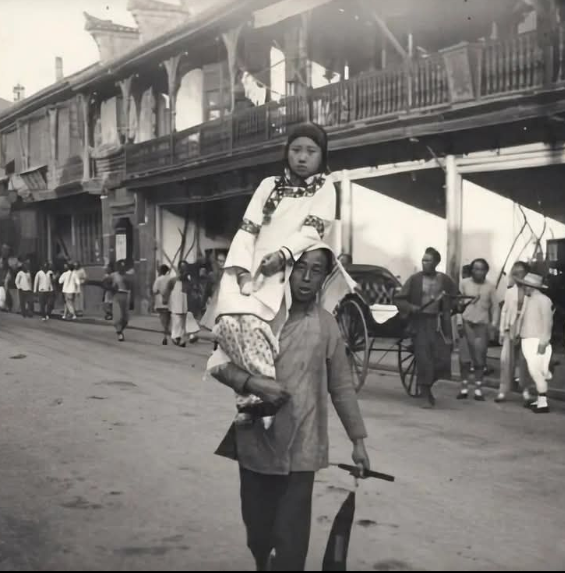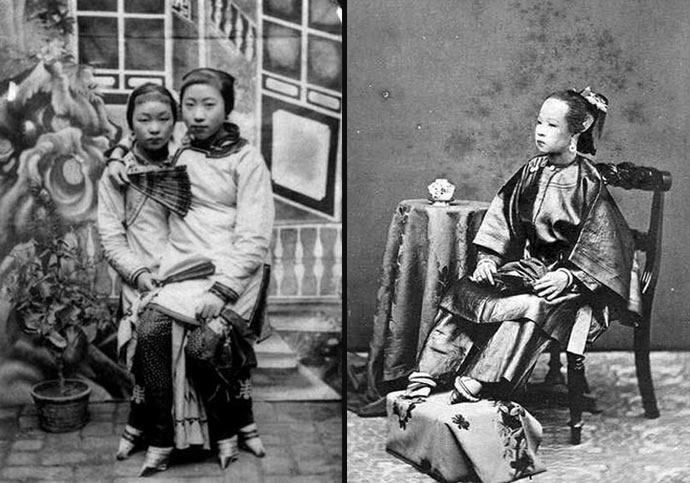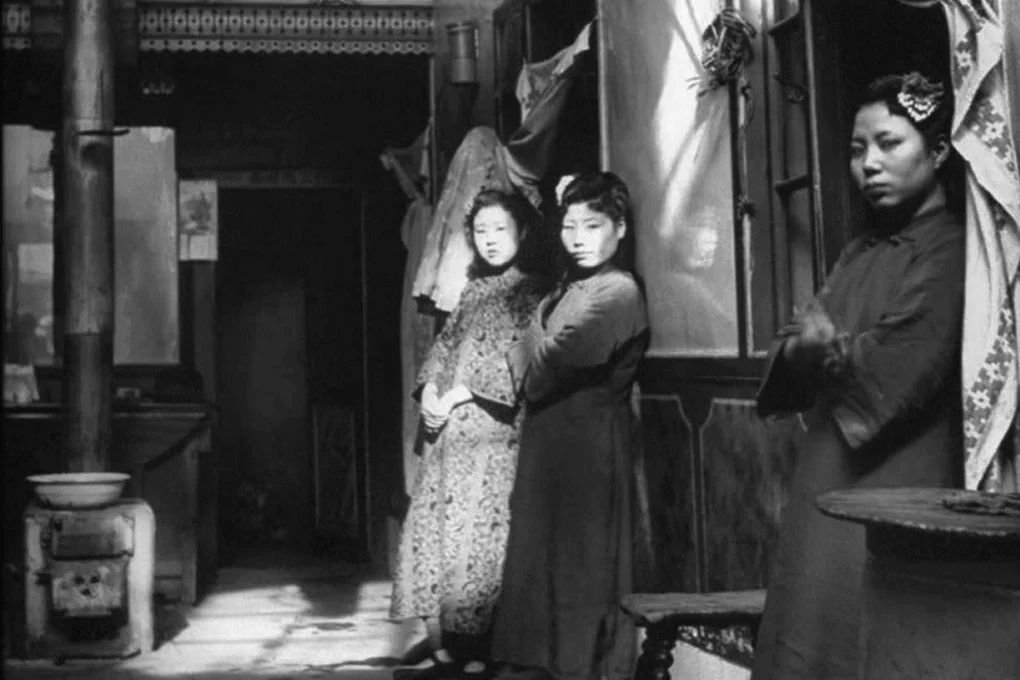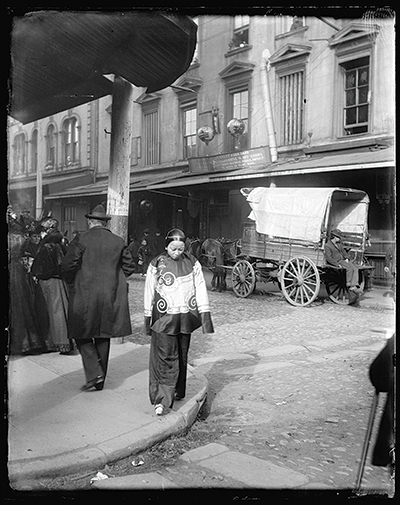In the imperial courts and bustling cities of pre-modern China, foot binding was once a deeply entrenched tradition. What began during the Song Dynasty became widespread over centuries, especially among the elite and in some commercial sectors. Women often at very young ages had their feet tightly bound to achieve the so-called ideal of the “lotus foot,” a foot no longer than three inches. To outsiders, the practice appears cruel and painful. To many in ancient China, it was considered a mark of beauty, status, and desirability.
But behind the aesthetics lay a far more complex and often grim reality. Bound feet weren’t just uncomfortable they severely restricted mobility. For women with tightly bound feet, even walking short distances was agonizing. The result was a strange and little-known profession that emerged in urban centers and red-light districts: the “quy no”, or human transporters, whose job was to carry women often those working in brothels from one location to another.

Who Were the “Quy No”?
The term “quy no” roughly translates to “chair bearer” or “carrier of women”, though it referred to a very specific and unusual role. In an era when wealthy patrons paid handsomely for the company of women in elite brothels, appearance and mystique mattered. High-status courtesans were not expected to walk through crowded streets, especially not with obvious difficulty caused by bound feet. That would not only challenge the illusion of elegance but also make their movement physically impossible.

So men were hired to carry these women, either in sedan chairs or sometimes piggyback-style, ensuring that they could move discreetly between their brothel homes and their clients’ locations or entertainment venues. The job may sound peculiar today, but in its time, it was both necessary and socially accepted, even if the men who performed it often lived on the margins of respectability.
Video:
The Horrors Behind Foot Binding
More Than Just a Ride
These carriers weren’t simply transport workers. In many cases, they became confidants, protectors, and even companions to the women they transported. They had to be discreet, strong, and often emotionally resilient. Some courtesans, especially those with regular high-paying clients, formed long-term bonds with their carriers.
It’s important to understand that prostitution during imperial China particularly in its elite forms was deeply entangled with art, music, and poetry. The women working in high-end brothels were often literate and cultured, engaging with scholars, poets, and officials. Their public appearances were part of a carefully curated persona, and “quy no” helped maintain that illusion by literally carrying them through the world they couldn’t walk freely in.

The Hidden Cost of Beauty and Control
The existence of “quy no” is a powerful example of how deeply a single beauty ideal could reshape not just a woman’s body, but entire social systems. Foot binding wasn’t only about femininity it was about control. Women with bound feet were less likely to run away, work independently, or step outside their designated roles.
Video:
Banned practice of foot binding blighting China’s oldest women | ITV News
By rendering women physically dependent, the practice ensured that men whether husbands, clients, or employers retained dominance over their freedom and movement. The “quy no” were a visible reminder of this imbalance, their job created by a tradition that prioritized appearance over autonomy.
A Profession Fading with Time
As foot binding began to decline in the early 20th century thanks to reformers, Western influence, and changing political attitudes so too did the need for carriers. The practice was officially banned in the early Republican era, though it continued in rural areas for several more decades. Eventually, both the women with bound feet and the men who carried them became rare, fading into the shadows of history.
Today, the profession of “quy no” may seem strange or even unthinkable, but it serves as an important historical window into how societies are shaped by their values, expectations, and the extremes people go to in order to meet them.

Conclusion: Echoes of an Unspoken Era
The story of the “quy no” is a forgotten chapter in the long history of foot binding, but it offers critical insight into a world where beauty came at great cost. It reminds us that even the most personal choices like how a person moves or appears can be influenced by broader forces of culture, power, and tradition.
And though the women and their carriers are long gone, their stories endure, quietly echoing through history’s hidden corridors reminding us of the human cost behind society’s most rigid ideals.


